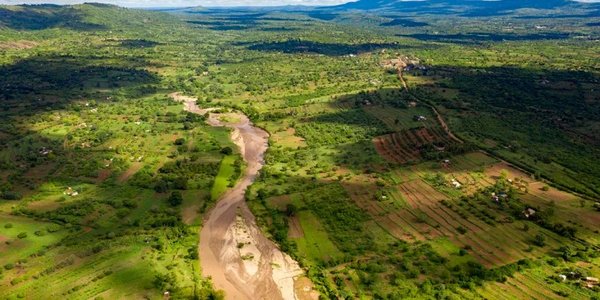- Share this article
- Subscribe to our newsletter
What knowledge is needed for a UN Decade on Ecosystem Restoration success?
The study, “Mapping the information landscape of the United Nations Decade on Ecosystem Restoration Strategy”, evaluated 20 years’ worth of publications on ecosystem restoration, including barriers and pathways to solutions as well as promoting long-term actions and monitoring.
It looked at 6,023 peer-reviewed and grey literature items to assess evidence underpinning the strategy for the UN Decade, which began in 2021 as a global campaign to catalyse efforts at ‘halting, preventing, and reversing degradation’ of the world’s ecosystems.
If not addressed, significant information gaps will limit the success of future restoration efforts, including any made through the UN Decade strategy, the researchers point out.
Although restoration work begins on the ground, leadership and guidance for action is set at the highest policy levels where these gaps should be addressed, says Manuel Guariguata, co-author of the study and a senior associate at the Center for International Forestry Research and World Agroforestry (CIFOR-ICRAF).
“The UN Decade on Ecosystem Restoration is a global strategy, and so efforts should be put into trying to address the gaps that are not only geographical but are also reflected in the barriers to pathways for action under the strategy,” he said.
Better long-term monitoring of ecosystems projects needed
Information gaps in long-term research and monitoring of ecosystem projects were a “fundamental challenge” highlighted by the study. A lack of long-term monitoring and feedback from restoration work makes it difficult to assess what measures were successful and could therefore be scaled up.
Ecosystem restoration is defined by the UN Decade as “a holistic approach to conserve native ecosystems and repair those that are degraded or damaged”, while aiming to overcome barriers to implementing ecosystem restoration at multiple scales. In this way, it contributes to achieving several of the UN’s Sustainable Development Goals (SDGs).
Restoration – a pathway to achieve goals of the Rio Conventions
Restoration is also viewed as a pathway to achieving numerous goals of the three Rio Conventions. For example, COP15 of the United Nations Convention to Combat Desertification (UNCCD) committed to “accelerate the restoration of one billion hectares of degraded land by 2030”. At its COP27, the UN Framework Convention on Climate Change (UNFCCC) in addition to its loss and damage fund, expanded its Adaptation Fund to USD 230 million, providing room for restoration activities. And the UN Convention on Biological Diversity emphasised its continued commitment to ecosystem restoration in late 2022 at its COP 15.
The UN Decade strategy identifies three pathways for action for overcoming six global barriers thought to hamper up-scaling: financial, legislative and policy environments, scientific research, public awareness, technical capacity and political will.
Too many studies on forests and too little on grass- and drylands
The new study also found a significant gap driven by an over-emphasis on forest ecosystems and restoration research compared with research that focused on grasslands, drylands, and mangroves, says Guariguata. Over three-quarters of the publications surveyed for the new paper focused on forests (78%), while only a few addressed grasslands (6%), drylands (4%) or mangroves (2%).
“That is a major message from this study: much more information is needed to back up any restoration efforts in grasslands, drylands and mangroves,” Guariguata maintains. Additionally, shortfalls in availability and geographic distribution of education for ecosystem restoration were a serious shortcoming, he remarks.
“These findings highlight opportunities for integrated, systematic monitoring frameworks that include both below-ground and above-ground indicators across multiple ecosystems,” adds Leigh Winowiecki, a global research leader in soil and land health at CIFOR-ICRAF.
The new findings lend significant support for the UN Decade strategy, also by referring to major barriers to restoration action, says Robin Chazdon, a senior fellow at the Global Restoration Initiative of the World Resources Institute. “This study identifies the important issues and sets things up well to delve into the action items to address the gaps identified,” Chazdon notes.
(CIFOR-ICRAF/wi)
Publication:
More information:
Read the full article in CIFOR-ICRAF’s Forests News





Add a comment
Be the First to Comment